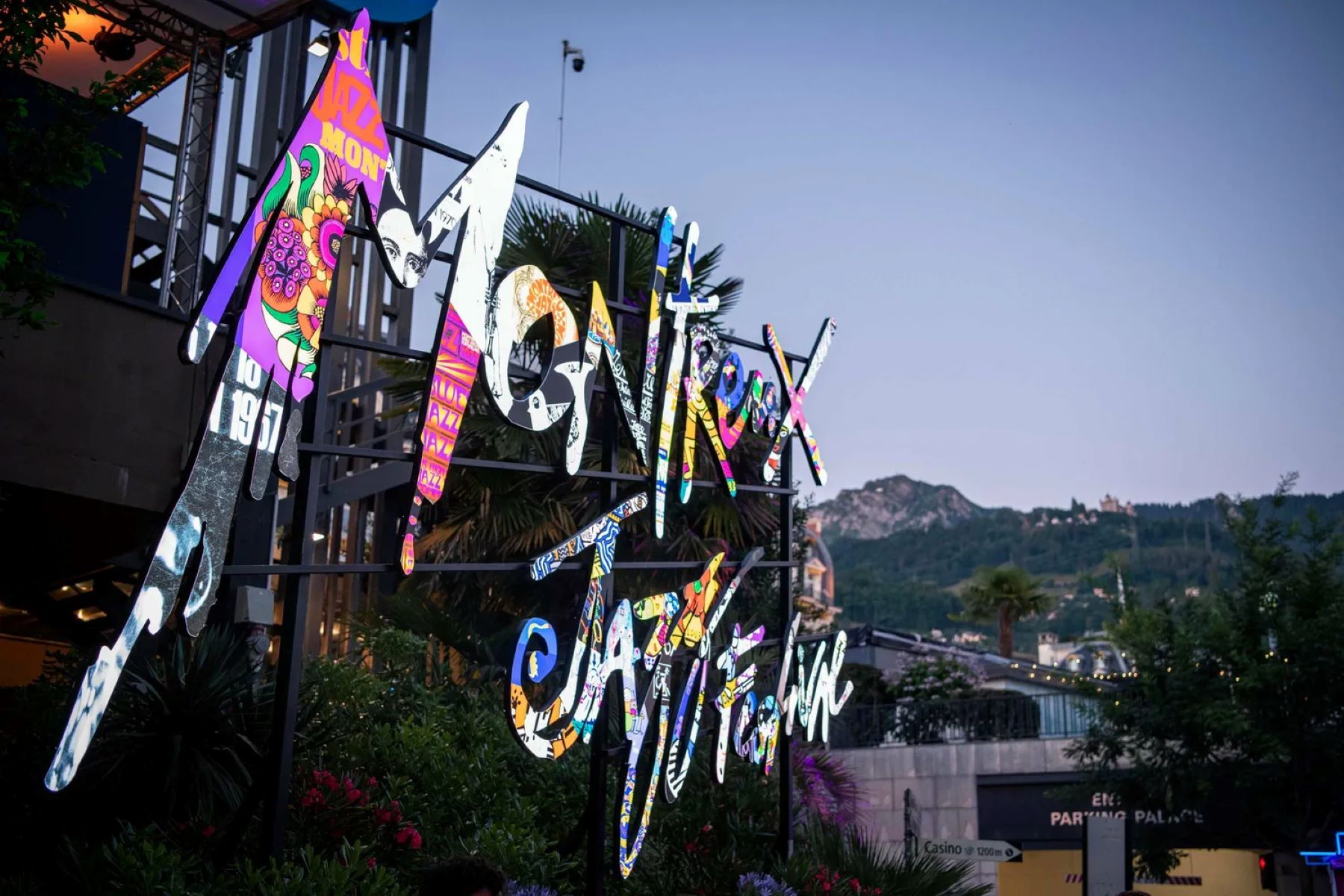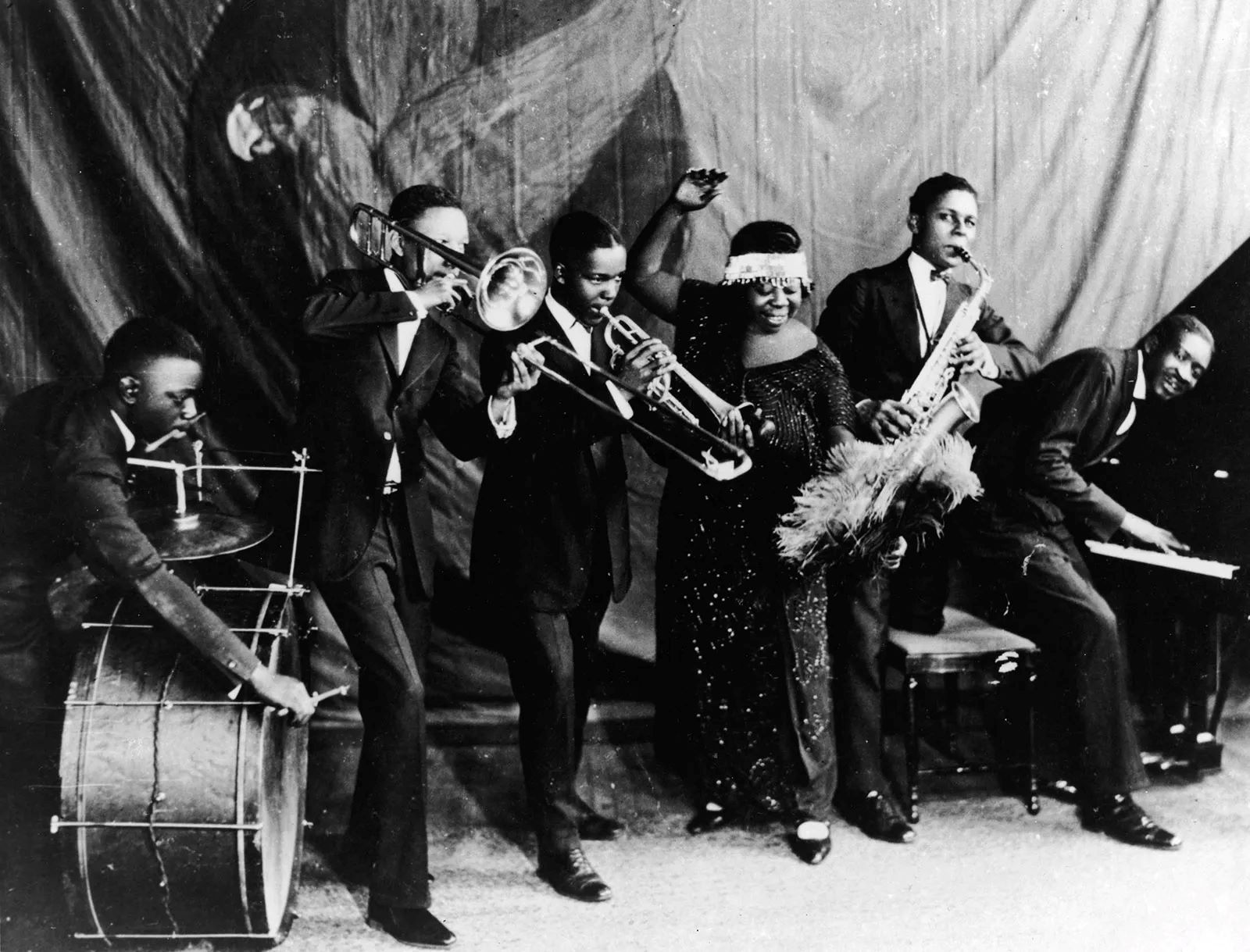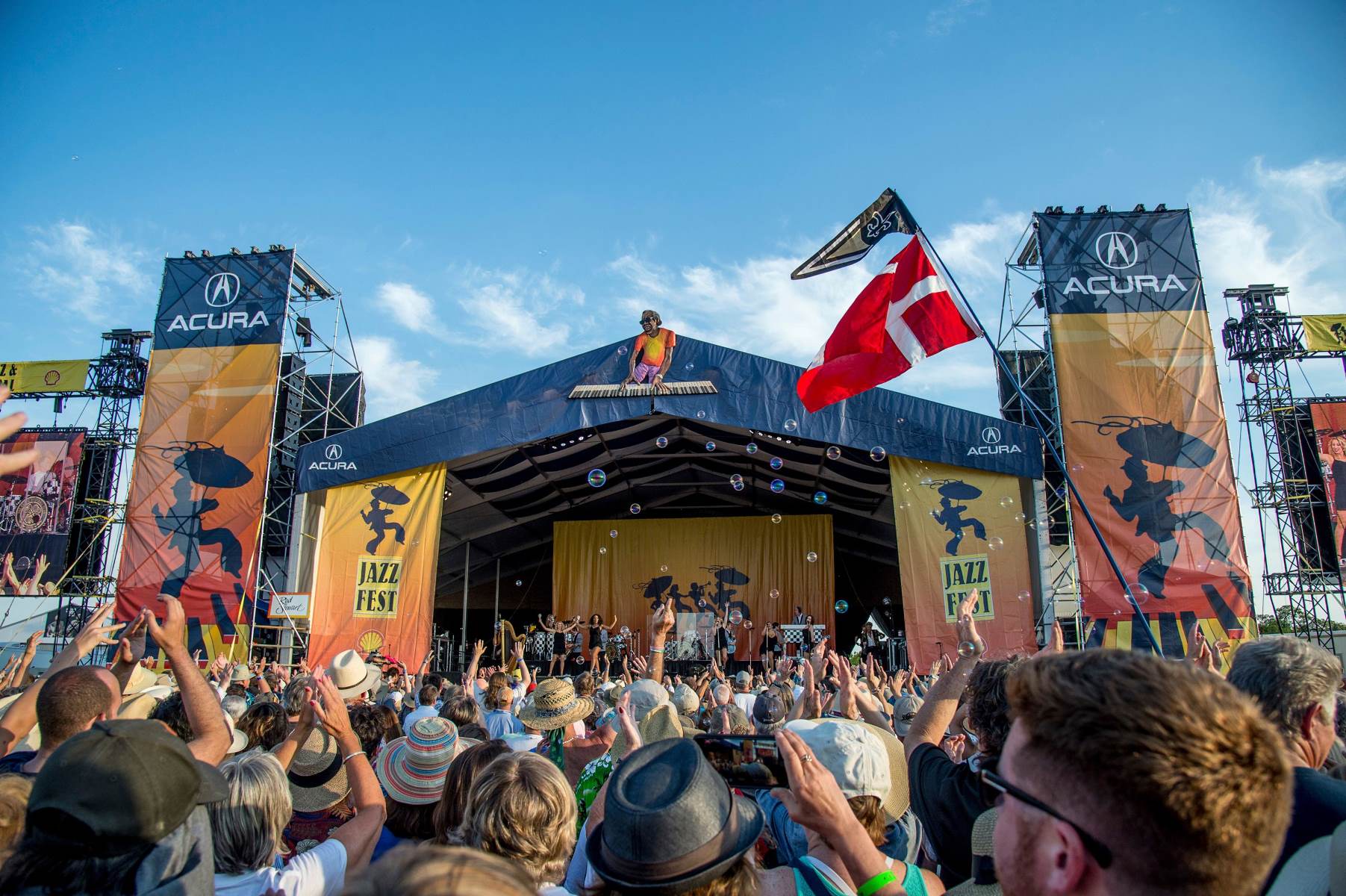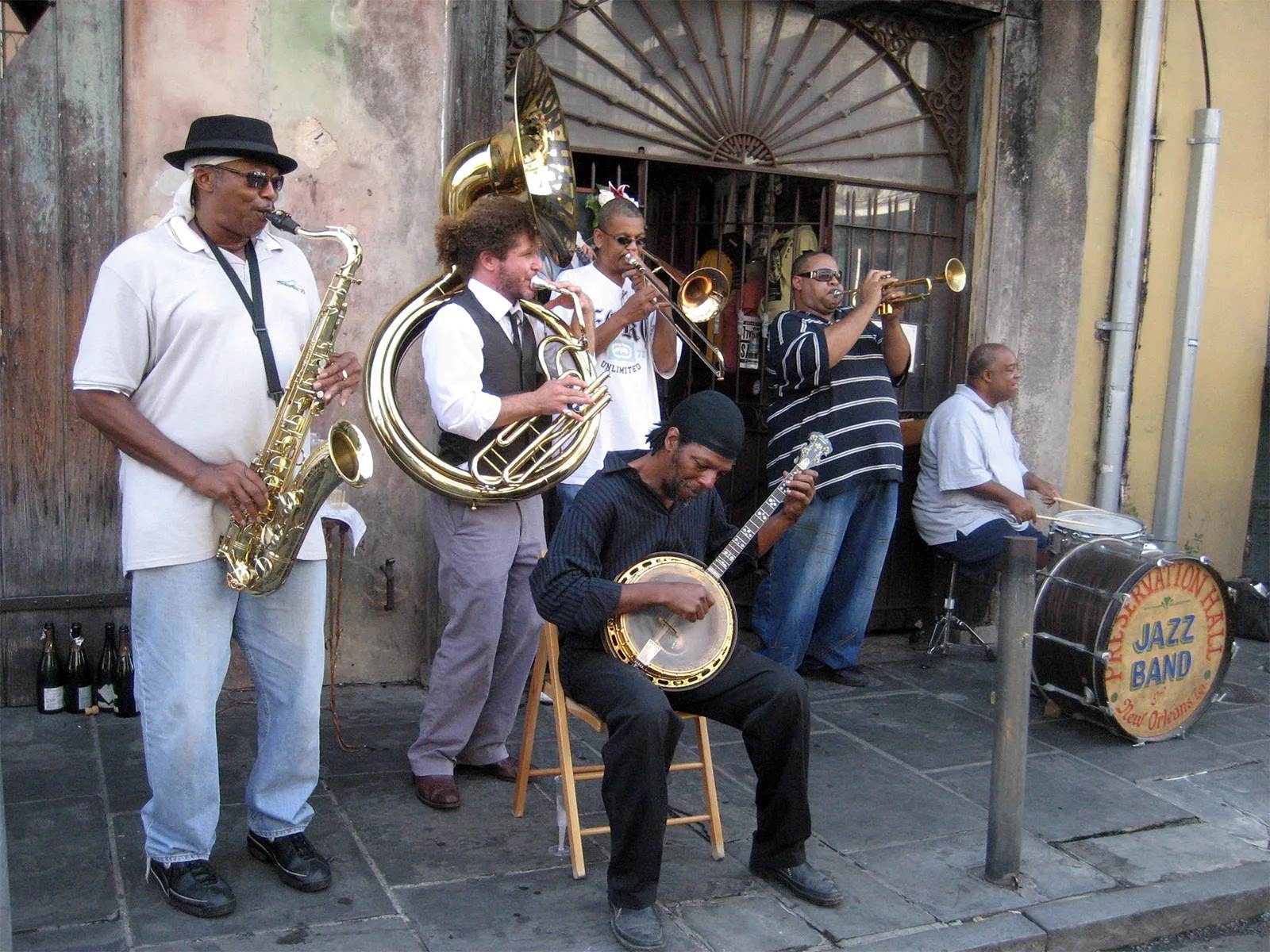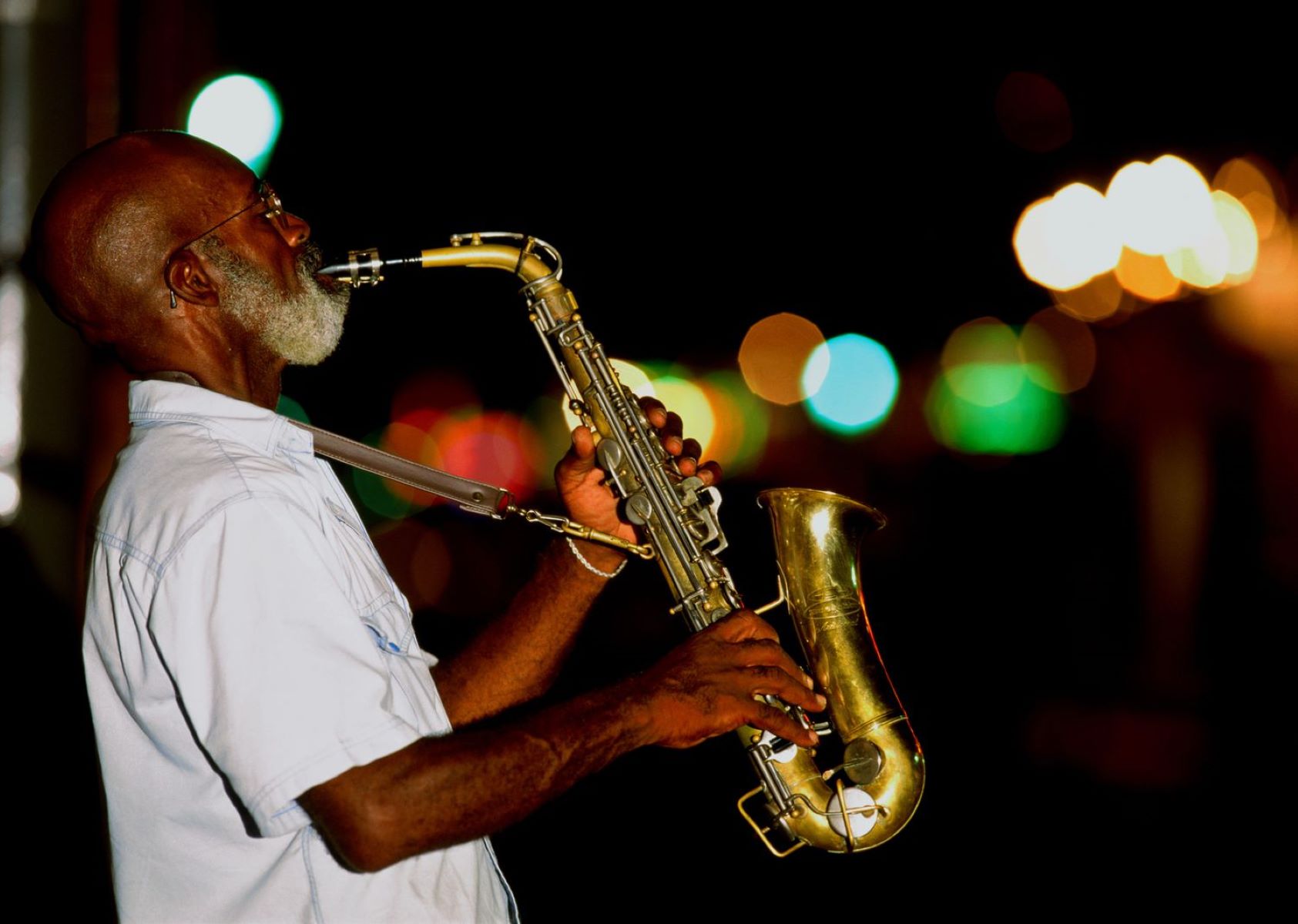

Jazz
Where Was The Capital Of Jazz
Modified: January 22, 2024
Discover the birthplace of Jazz and explore the rich history and vibrant music scene of the Jazz capital. Immerse yourself in the rhythm and soul of this iconic genre.
(Many of the links in this article redirect to a specific reviewed product. Your purchase of these products through affiliate links helps to generate commission for AudioLover.com, at no extra cost. Learn more)
Table of Contents
- Introduction
- Origins of Jazz
- Early Jazz Centers
- New Orleans: The Birthplace of Jazz
- Chicago: The Jazz Mecca of the Midwest
- New York City: The Harlem Renaissance and Jazz
- Kansas City: The “Biggest Little City in Jazz”
- The Influence of Jazz on European Capitals
- Jazz Spreads to the West Coast: Los Angeles and San Francisco
- Modern Jazz Hubs: New York City and Beyond
- Conclusion
Introduction
Jazz, a genre that embodies the spirit of improvisation, soulful melodies, and complex rhythms, holds a significant place in the realm of music. It has captivated audiences around the world for over a century, transcending cultural boundaries and leaving an indelible mark on the music industry. While jazz has a rich and diverse history, it is not confined to one specific location. Instead, it has flourished in various cities, each contributing its own unique flavor to the genre.
In this article, we will explore the key cities that have been instrumental in shaping and hosting the evolution of jazz. From the birthplace of jazz in New Orleans to the bustling jazz scenes in Chicago, New York City, and beyond, we will delve into the historical significance and cultural impact of these jazz capitals. We will also examine the influence of jazz on European cities and its spread to the West Coast of the United States.
Jazz has always been a reflection of the cultural zeitgeist of its time and place. It has evolved and adapted, absorbing influences from various musical genres and cultural movements. By understanding the historical context and the unique characteristics of these jazz capitals, we can gain a deeper appreciation for the development and enduring legacy of this iconic genre.
So, grab a seat, imagine the smoky ambiance of a dimly lit jazz club, and let us embark on a journey through the cities that have been the heartbeat of jazz. From the syncopated rhythms of New Orleans to the avant-garde experimentation of New York City, we will explore the vibrant landscapes where jazz has thrived and continue to inspire generations of musicians and enthusiasts alike.
Origins of Jazz
To truly understand the significance of jazz capitals, it is important to delve into the origins of this extraordinary genre. Jazz emerged in the late 19th and early 20th centuries in the African American communities of the United States, particularly in the Southern states. It draws its influences from a blend of African and European musical traditions, including spirituals, blues, ragtime, and brass band music.
The origins of jazz can be traced back to the era of slavery, where African musical traditions collided with the European music brought by colonizers. Enslaved Africans often used music as a means of communication and expression, preserving their cultural heritage and creating a new musical language. This fusion of African rhythms and melodies with European harmonies and instrumentations laid the foundation for jazz as we know it today.
In the late 19th century, the influence of ragtime music, characterized by its syncopated rhythms and lively melodies, further shaped the development of jazz. Ragtime was popularized by composers like Scott Joplin, who introduced intricate piano arrangements that showcased the rhythmic complexity and improvisation inherent in jazz.
As the 20th century dawned, New Orleans emerged as a hotbed for musical innovation and cultural exchange. The city’s rich cultural diversity, with its mix of African, Caribbean, and European influences, provided the perfect breeding ground for the birth of jazz. New Orleans served as a melting pot where musicians from different backgrounds could come together, share ideas, and create something entirely new.
One key aspect of the early jazz scene in New Orleans was the prominence of brass bands. These marching bands played a vital role in social events and funerals, infusing their performances with improvisation and experimentation. Musicians like Buddy Bolden and Jelly Roll Morton were pivotal figures in this early jazz movement, pushing the boundaries of traditional musical conventions and popularizing the use of improvisation in their performances.
As jazz began to gain popularity, it quickly spread beyond New Orleans, finding its way to other cities where it would continue to evolve and thrive. The jazz capitals that emerged in the early 20th century would become central hubs for innovation, cultural exchange, and the growth of this dynamic genre.
Early Jazz Centers
As jazz gained momentum and popularity in the early 20th century, several cities emerged as important centers for its development. These cities fostered vibrant jazz scenes and provided platforms for musicians to experiment, collaborate, and showcase their talents. Let’s take a closer look at some of the key early jazz centers.
New Orleans: The Birthplace of Jazz
New Orleans holds the distinction of being the birthplace of jazz. Its unique cultural mix of African, Caribbean, and European influences created a fertile ground for the development of this groundbreaking genre. Jazz thrived in the city’s bustling music clubs, dance halls, and street parades. Musicians like Louis Armstrong, Sidney Bechet, and Kid Ory rose to prominence during this time, revolutionizing jazz and bringing it to the forefront of American music.
Chicago: The Jazz Mecca of the Midwest
In the 1920s, Chicago became a major jazz center, attracting musicians from all over the country. The city’s vibrant nightlife provided ample opportunities for jazz performances, and its recording studios played a crucial role in spreading the music to a wider audience. Jazz luminaries such as King Oliver, Jelly Roll Morton, and Earl Hines made their mark in Chicago, ushering in a new era of jazz innovation and establishing the city as a prominent force in the jazz world.
New York City: The Harlem Renaissance and Jazz
During the 1920s and 1930s, New York City, particularly the neighborhood of Harlem, experienced a cultural explosion known as the Harlem Renaissance. This movement embraced various art forms, including jazz, and celebrated African American culture and creativity. Influential jazz figures like Duke Ellington, Count Basie, and Billie Holiday thrived in the vibrant jazz clubs of Harlem, captivating audiences with their distinctive styles and contributing to the cultural expansion of jazz.
Kansas City: The “Biggest Little City in Jazz”
While not as widely recognized as New Orleans or Chicago, Kansas City played a significant role in the development of jazz. The city’s thriving music scene became a breeding ground for big bands and swing music in the 1930s and 1940s. Legendary musicians such as Charlie Parker, Lester Young, and Count Basie honed their skills and pushed the boundaries of jazz in the clubs of Kansas City. The city’s relaxed atmosphere and innovative spirit contributed to the evolution of jazz as it embraced new styles and showcased virtuosic musicianship.
These early jazz centers laid the foundation for the widespread popularity and influence of jazz. They provided platforms for musicians to experiment, collaborate, and refine their craft, pushing the boundaries of what was considered possible in music. Their legacies continue to inspire musicians and jazz enthusiasts around the world, reminding us of the rich history and cultural significance of this remarkable genre.
New Orleans: The Birthplace of Jazz
When it comes to the origins of jazz, one city stands out above all others: New Orleans. Often referred to as the “Birthplace of Jazz,” this vibrant city in the Southern United States holds a special place in the history and development of the genre. The cultural melting pot of New Orleans gave birth to a unique musical tradition that blended African rhythms, European harmonies, and Caribbean influences, setting the stage for the birth of jazz.
In the late 19th and early 20th centuries, New Orleans was a bustling, multicultural city, teeming with creativity and musical expression. Its diverse population included people of African, Creole, and European descent, each bringing their own musical traditions and influences. The fusion of these musical styles and cultures culminated in the creation of jazz, a genre that broke new ground and captivated audiences around the world.
One of the key factors in the development of jazz in New Orleans was the presence of brass bands. These bands played a significant role in social gatherings, parades, and funerals, providing a platform for musicians to showcase their skills and experiment with improvisation. They laid the foundation for the virtuosic playing and collaborative spirit that would become synonymous with jazz.
New Orleans also nurtured a rich tradition of street music, with musicians performing in the city’s vibrant neighborhoods and public spaces. The syncopated rhythms of ragtime and the soulful melodies of the blues permeated the air, creating a dynamic and lively atmosphere that fueled the evolution of jazz. Musicians like Buddy Bolden, considered by many as the first jazz musician, and Jelly Roll Morton, a pioneer in jazz composition, emerged from this vibrant scene, shaping the course of jazz history.
The birth of jazz in New Orleans coincided with the gradual dismantling of racial segregation laws, allowing for greater cultural exchange and collaboration among musicians of different ethnic backgrounds. This cross-pollination of ideas and styles helped jazz to flourish and evolve, as musicians drew inspiration from one another to create something truly unique.
As word of the exciting new sound emerging from New Orleans spread, jazz began to captivate audiences outside the city. Musicians like Louis Armstrong, who got his start in the Crescent City, would go on to become global ambassadors for the genre, spreading the joy and creativity of jazz to audiences around the world.
Today, New Orleans continues to celebrate its rich jazz heritage with annual festivals, vibrant live music venues, and a deep appreciation for the genre. The city remains a mecca for jazz enthusiasts, offering a glimpse into the birthplace of a musical revolution that continues to inspire and captivate generations of musicians and music lovers.
Chicago: The Jazz Mecca of the Midwest
In the early 20th century, as jazz began to sweep across the nation, Chicago emerged as a thriving center for the genre. The city’s vibrant nightlife, cultural diversity, and bustling music scene made it a magnet for talented musicians from all over the country. Chicago became known as the “Jazz Mecca of the Midwest,” playing a crucial role in shaping the evolution of jazz.
During the 1920s, the Prohibition era, when the sale of alcohol was illegal, Chicago’s speakeasies became hubs for jazz performances. These underground venues created a vibrant atmosphere for musicians to experiment, improvise, and entertain audiences seeking an escape from the restrictions of the time. Legendary figures like King Oliver, Louis Armstrong, and Jelly Roll Morton made their marks in the smoky clubs of Chicago, captivating audiences with their virtuosity and innovative playing styles.
One of the key milestones in Chicago’s jazz history was the Great Migration, a mass movement of African Americans from the rural South to urban cities in the North, including Chicago. This influx of talent infused the city’s jazz scene with new energy, creativity, and diverse musical influences. Chicago’s South Side became a hotbed of jazz activity, with clubs like the Apex and the Sunset Café showcasing the best jazz musicians of the time.
Chicago’s importance in jazz was not limited to live performances. The city played a significant role in the recording industry, with numerous record labels and studios based there. Musicians like Earl Hines, Fletcher Henderson, and Benny Goodman recorded groundbreaking jazz albums in Chicago, bringing the music to a wider audience and contributing to its rise in popularity.
Chicago became a melting pot of jazz styles and subgenres, including New Orleans-style jazz, swing, and the emerging bebop movement. The city’s vibrant jazz community fostered collaboration and musical experimentation, pushing the boundaries of what jazz could be. Jazz musicians and composers in Chicago played a significant role in defining the sound and direction of the genre during this time.
The influence of Chicago reverberated throughout the jazz world, as musicians who honed their craft in the city brought their talents and innovations to other jazz centers. The city’s impact on the development of jazz cannot be overstated, and its contributions to the genre continue to be celebrated and revered today.
While Chicago may not have been the birthplace of jazz, it played a vital role in its growth and evolution. The city’s vibrant jazz history serves as a testament to the power of creativity, collaboration, and cultural exchange, creating a lasting legacy that continues to inspire jazz musicians and enthusiasts around the world.
New York City: The Harlem Renaissance and Jazz
In the early 20th century, New York City, particularly the neighborhood of Harlem, became a cultural hotspot and a thriving center for jazz. During this period, known as the Harlem Renaissance, African American artists, writers, and musicians flourished, making significant contributions to the growth and development of jazz as an art form.
The Harlem Renaissance was a vibrant cultural movement that celebrated and showcased African American talent and creativity. As part of this cultural reawakening, jazz became a central element, with Harlem serving as a hub for jazz performances, clubs, and innovative experimentation. The neighborhood became a magnet for talented musicians from across the country, seeking both artistic freedom and opportunities for success.
Harlem’s lively and cosmopolitan atmosphere attracted jazz luminaries such as Duke Ellington, Louis Armstrong, and Billie Holiday. These musicians, along with many others, brought their unique styles and artistic visions to the Harlem jazz scene, contributing to the rich tapestry of the genre. The Big Band sound, characterized by large ensembles and intricate arrangements, gained popularity during this time, with Harlem becoming a breeding ground for big band swing music.
One of the pivotal institutions of the Harlem jazz scene was the famous Cotton Club. Located in the heart of Harlem, the Cotton Club showcased African American talent, featuring some of the most prominent jazz musicians of the era. Despite the Club’s segregationist policies, it helped elevate the careers of artists like Duke Ellington and Cab Calloway, attracting a diverse audience and making Harlem synonymous with jazz excellence.
The fusion of jazz with other art forms was a hallmark of the Harlem Renaissance. Jazz musicians collaborated with dancers, poets, and visual artists, creating a multi-disciplinary approach to artistic expression. The influence of jazz extended beyond music, permeating literature, theater, and visual arts, reflecting the energy, creativity, and social consciousness of the era.
While the Harlem Renaissance eventually waned, its impact on jazz and American culture was profound and enduring. The cultural movements and artistic collaborations that emerged during this time continue to shape jazz and influence artists today. The spirit of innovation, experimentation, and artistic freedom that thrived in Harlem during this vibrant period left an indelible mark on the evolution of jazz.
New York City, with Harlem at its heart, has continued to be a vibrant jazz hub. Its clubs, such as the Village Vanguard and the Blue Note, have hosted countless legendary jazz performances and provided a platform for emerging talent. New York has maintained its reputation as a city that both respects and pushes the boundaries of jazz, serving as a beacon for musicians and enthusiasts alike.
The legacy of the Harlem Renaissance lives on in the cultural fabric of New York City. The vibrant jazz scene that thrived during this period continues to inspire and influence generations of musicians, making New York City a vital center for the perpetuation and evolution of jazz.
Kansas City: The “Biggest Little City in Jazz”
While New Orleans, Chicago, and New York City are often mentioned as the key hubs of jazz, another city played a significant role in the development and evolution of the genre: Kansas City. Known as the “Biggest Little City in Jazz,” Kansas City had a thriving jazz scene that left an indelible mark on the history of this iconic music.
In the 1920s and 1930s, Kansas City became renowned for its vibrant jazz and blues culture. The city provided fertile ground for musicians to experiment and innovate, attracting talented artists from across the country. Kansas City embraced a distinctive style of jazz characterized by its rough and ready nature, emphasizing a hard-swinging beat, bluesy melodies, and extended improvisations.
One of the defining features of Kansas City jazz was the prominence of big bands. These large ensembles, with their powerful horn sections and driving rhythms, created a full, rich sound that filled the city’s jazz clubs and dance halls. Pioneering jazz bandleaders such as Bennie Moten and Count Basie established themselves in Kansas City, attracting top-tier musicians and introducing new musical arrangements and improvisational techniques.
Kansas City jazz was known for its lively and energetic performances, often accompanied by enthusiastic dancers. Legendary venues such as the Reno Club and the Blue Room became hotspots for both local musicians and touring bands, earning Kansas City a reputation as a destination for jazz enthusiasts. The city’s jazz scene became a bustling hub, drawing musicians from diverse backgrounds and contributing to the genre’s evolution.
An important aspect of Kansas City jazz was the communal nature of its music-making. Musicians would engage in friendly cutting contests or “cutting sessions,” where they would take turns improvising and engaging in musical dialogue. These sessions were not only showcases of virtuosic playing but also opportunities for musicians to learn from one another and develop their own unique styles.
The Kansas City jazz scene reached its peak in the 1930s and 1940s, but its influence continued to reverberate in the world of jazz. The city produced influential musicians such as Charlie Parker, Lester Young, and Mary Lou Williams, who would go on to shape the course of jazz history and leave an indelible mark on the genre.
While the prominence of Kansas City’s jazz scene declined in the subsequent decades, its legacy remains intact. The city still celebrates and honors its jazz heritage with annual festivals and events. Historical landmarks and jazz clubs, including the revived Blue Room, continue to pay homage to the city’s rich jazz history.
Kansas City’s contribution to jazz serves as a testament to the power of a smaller city in shaping the evolution of a genre. The vibrant and innovative spirit of Kansas City jazz continues to inspire musicians and jazz enthusiasts, reminding us that great music can emerge from any corner of the world.
The Influence of Jazz on European Capitals
The impact of jazz was not limited to its birthplace and the United States. In the early 20th century, jazz crossed the ocean and found fertile ground in several European capitals. The influence of this uniquely American genre on European music and culture was profound, sparking a cultural exchange that reshaped the artistic landscape of these cities.
Paris, the City of Light, was one of the first European capitals to embrace jazz. In the 1920s, American jazz musicians, disillusioned by racial segregation in the United States, found acceptance and appreciation in the French capital. The vibrant jazz scene in Paris attracted influential musicians such as Josephine Baker, Sidney Bechet, and Louis Armstrong, who captivated audiences and inspired local musicians to adopt jazz rhythms and improvisational techniques. The combination of American jazz and French musical sensibilities led to the emergence of a distinctive style known as “gypsy jazz” or “manouche,” popularized by the legendary guitarist Django Reinhardt.
London was another European city deeply influenced by jazz. In the post-World War I era, American jazz bands toured Europe, and London became a central destination. British musicians eagerly absorbed the sounds and innovations of jazz, incorporating them into their own compositions and performances. The city soon gained a reputation as a jazz hotspot, with venues like the famous Ronnie Scott’s Jazz Club capturing the spirit of American jazz. British jazz musicians such as John Dankworth, Cleo Laine, and Humphrey Lyttelton emerged as trailblazers, infusing their own unique style into the expanding jazz scene.
Berlin’s love affair with jazz began in the 1920s during the Weimar Republic era, a time of cultural dynamism and social change. American jazz bands found a welcoming audience in Berlin’s nightclubs and cabarets, where jazz music provided an escape from the political and economic upheavals of the time. The syncopated rhythms and experimental nature of jazz influenced German composers and musicians, leading to the creation of a unique hybrid style known as “hot jazz” or “hot dance.” Artists like Kurt Weill and the pioneering all-female jazz band The Original White Jazz Girls incorporated jazz elements into their compositions, forever leaving a mark on the German music scene.
Jazz also found its way to other European capitals such as Rome, Prague, and Stockholm, where it inspired local musicians and influenced various music genres. The universal language of jazz transcended cultural barriers, opening up new avenues for artistic expression and fueling the growth of a global jazz community.
The influence of jazz on European capitals continues to shape the music landscape today. Jazz festivals, clubs, and dedicated institutions celebrate the genre’s enduring legacy and provide a platform for both local and international jazz artists. The cultural exchange that took place between jazz musicians from the United States and Europe remains a testament to the power of music to bridge divides and create a shared language of creativity and expression.
The infusion of jazz into European capitals brought new rhythms, harmonies, and improvisational techniques to the forefront. It not only enriched the musical traditions of these cities but also sparked a cultural renaissance that forever changed the artistic fabric of Europe.
Jazz Spreads to the West Coast: Los Angeles and San Francisco
As jazz continued to evolve and capture the hearts of music enthusiasts across the United States, it eventually made its way to the West Coast. Cities like Los Angeles and San Francisco became vibrant jazz hubs, fueling the growth of the genre and showcasing the unique contributions of West Coast musicians.
Los Angeles, with its thriving entertainment industry and diverse population, provided a fertile ground for the development of jazz. As the film industry prospered in the early 20th century, jazz found its place in Hollywood soundtracks, adding a touch of sophistication and energy to movies. Many talented jazz musicians, including the likes of Dexter Gordon, Charles Mingus, and Chet Baker, flocked to Los Angeles, drawn by the opportunities for studio work and live performances. The city’s lively jazz scene, encompassing legendary venues like The Lighthouse and The Troubadour, fostered a sense of creativity and innovation that contributed to the growth of the genre on the West Coast.
San Francisco, with its rich cultural history and progressive spirit, also embraced jazz with open arms. The city’s vibrant art and music scene provided a platform for jazz musicians to experiment and push boundaries. The Fillmore District became a focal point for jazz activity, hosting clubs and venues where legendary musicians like John Coltrane and Thelonious Monk would perform. The unique blend of artistic expression and countercultural movements in San Francisco created a fertile environment for jazz to thrive, as musicians absorbed influences from various genres and experimented with new sounds and approaches.
The West Coast jazz scene developed its own distinct sound, influenced by a mix of traditional jazz, cool jazz, and bebop. West Coast musicians prioritized melodic improvisation and showcased a lighter, more relaxed approach compared to their East Coast counterparts. The unique geography and cultural influences of the region played a significant role in shaping the West Coast jazz sound, which would go on to inspire countless musicians and leave a lasting impact on the genre.
The influence of West Coast jazz spread beyond California, reaching other cities on the West Coast such as Seattle and Portland. The region’s commitment to artistic expression, diversity, and cultural exchange helped solidify the West Coast as an important jazz hub.
Today, Los Angeles and San Francisco continue to be vibrant centers for jazz. The legacy of West Coast jazz lives on in the numerous jazz festivals, clubs, and educational institutions that celebrate the genre and nurture the next generation of jazz musicians. The West Coast’s contribution to the rich tapestry of jazz history is undeniable, showcasing the genre’s ability to adapt, evolve, and inspire audiences in new and exciting ways.
Modern Jazz Hubs: New York City and Beyond
While jazz has thrived in various cities throughout its history, few can match the enduring influence and vibrant nature of New York City as a modern jazz hub. New York City continues to be a beacon for jazz musicians and enthusiasts, offering a plethora of venues, festivals, and opportunities for collaboration and musical growth.
New York City’s jazz scene remains a dynamic and ever-evolving landscape. The city boasts legendary jazz clubs such as the Village Vanguard, Birdland, and Jazz Standard, where musicians from around the world showcase their talent and innovation. The city is also home to prestigious institutions like Jazz at Lincoln Center, which celebrates jazz as an art form and hosts performances, education programs, and archival initiatives to preserve and promote the genre.
New York City’s diverse neighborhoods, such as Harlem, Greenwich Village, and Brooklyn, each have their own jazz communities and distinct flavors. Harlem, in particular, continues to honor its storied jazz heritage with venues like the Apollo Theater and Minton’s Playhouse, ensuring that the spirit of the Harlem Renaissance lives on.
Beyond New York City, other modern jazz hubs have emerged across the United States and around the world. Cities like New Orleans, Chicago, and Los Angeles continue to nurture their jazz traditions while embracing new sounds and innovations. New Orleans keeps its jazz heritage alive with vibrant festivals like the New Orleans Jazz & Heritage Festival, showcasing both traditional and contemporary jazz music in the city where it all began.
Chicago, known for its rich history in jazz, still thrives as a hub for the genre. The city’s annual Chicago Jazz Festival and the Association for the Advancement of Creative Musicians (AACM) have played significant roles in cultivating and promoting innovative jazz in the city and beyond.
Los Angeles remains a vibrant jazz center, with a diverse and eclectic jazz scene that embraces a wide range of styles. The city’s Jazz Bakery and Catalina Jazz Club are renowned venues that continue to attract a roster of world-class jazz musicians.
Internationally, cities like Paris, London, and Tokyo have embraced jazz and built their own strong jazz communities. Jazz festivals, such as the Montreux Jazz Festival in Switzerland or the North Sea Jazz Festival in the Netherlands, bring together jazz musicians and enthusiasts from around the world, highlighting the global reach and appeal of the genre.
In the digital age, with the advent of streaming platforms and online communities, the boundaries of jazz hubs have expanded even further. Musicians and fans can connect, collaborate, and share their love for jazz across continents and time zones, forming a virtual jazz hub that transcends physical limitations.
Modern jazz hubs continue to push the boundaries of the genre, embracing new sounds, and forging new paths of artistic expression. Whether it is in the iconic clubs of New York City or the bustling jazz scenes of cities around the world, jazz remains a dynamic and ever-evolving art form that captivates audiences and inspires generations of musicians to push the boundaries of creativity.
Conclusion
Jazz, with its rich history and vibrant evolution, has woven its way into the cultural fabric of cities around the world. From the birthplace of jazz in New Orleans to the thriving jazz scenes of New York City, Chicago, and beyond, each city has made its unique contributions to the genre. We have explored the origins of jazz and witnessed how it spread and influenced European capitals, as well as how it found its place on the West Coast of the United States.
New Orleans impressed upon the world the rhythmic foundations and improvisational spirit of jazz, while Chicago and New York City brought their distinct flavors and innovations to the genre. Jazz migrated to Europe, where it nurtured artistic exchanges and inspired new musical movements. The West Coast, with its relaxed and melodic style, birthed a unique sound that left an indelible mark.
Throughout the decades, jazz has continued to adapt and thrive, embracing new technologies and pushing boundaries.
Today, New York City remains a modern jazz hub, attracting musicians from around the world and offering a thriving jazz scene with a multitude of venues and festivals. Other cities, such as New Orleans, Chicago, and Los Angeles, maintain their jazz legacies, while international cities like Paris and London celebrate their contributions to the genre.
The essence of jazz cannot be confined to one specific location. It is fluid and dynamic, constantly evolving and capturing the hearts of audiences worldwide. Jazz has become a universal language, connecting people across cultures, and fostering a sense of joy, creativity, and artistic exploration.
As enthusiasts, musicians, and admirers, we pay homage to the cities that have shaped jazz into the genre we know and love today. From the birthplace in New Orleans to the bustling jazz meccas, each city adds its unique taste and energy to the worldwide jazz family.
So let us continue to celebrate the rich history, cultural impact, and boundless artistic possibilities of jazz as it continues to thrive in the cities and in our hearts.

